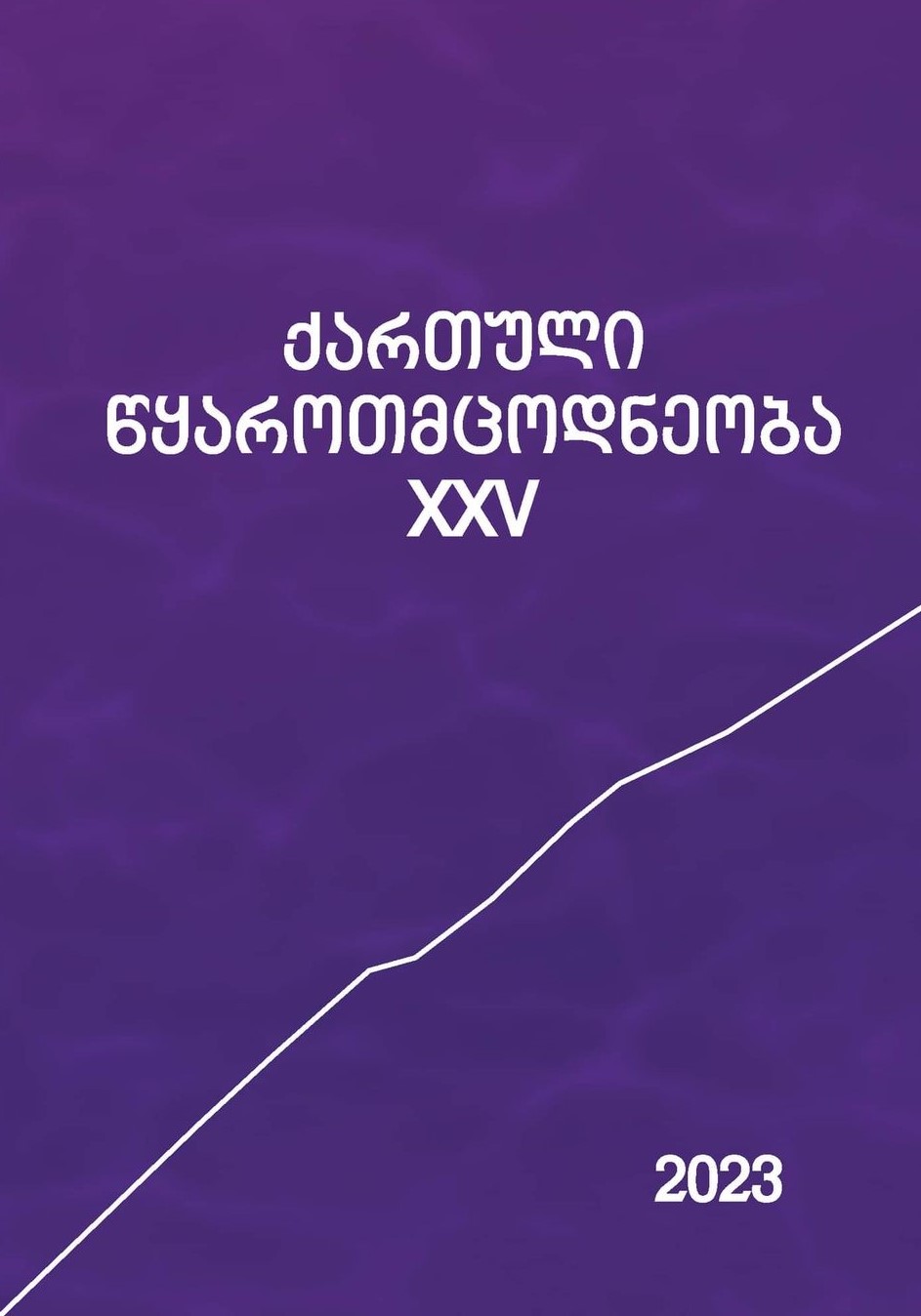Coins of Bagrat IV the Nobelissimos (Modifying the Coin Design)
Abstract
Silver coins in the name of Bagrat IV, Giorgi II, and David IV bearing their Byzantine titles are considered to be a significant historical primary source. It seems reasonable to study this monetary series monographically; however, all the available and newly discovered specimens have to be analyzed individually and in groups first, as well as the reasons for modifying the coin design in Bagrat’s reign.
Only 12 coins of Bagrat IV have been published so far; by means of this article we publish the 13th specimen. It was struck with the same dies as one of the coins from Likhni hoard (#37). Die-analysis of the available coins demonstrated, that 13 coins were struck employing 3 (or, 5) obverse and 3 reverse dies. Seemingly, the emission was not sporadical, though it is impossible to establish its scale, as we do not know how many coins could be struck before the die went out of order. No punches were employed for carving the Asomtavruli legend on the reverse dies.
We have discussed the chronology of Bagrat IV’s coins with nobelissimos title, refering to Byzantine numismatic history (Byzantine prototypes, the 2/3 miliaresia of Constantine IX were first issued in 1042-1050 time period) and Georgian medieval epigraphic and narrative sources (St. George Church of Savane 1046 inscription: Bagrat is still a couropalates; Avlari 1050? inscription: Bagrat is already a nobelissimos; 1059 colophon in Katskhi tetraevangelion: Bagrat is still a nobelissimos; Ghulalisi 1060? inscription: Bagrat is already a sebastos). These coins could be issued in 1046 or 1050 (1050s?) – 1060 (1060s?) time period.
Bagrat IV was granted the title of nobelissimos even before visiting Constantinople; however, he probably issued coins with this title imitating the 2/3 miliaresia of Constantine IX seen in Constantinople only in 1050s, after having returned back to Georgia. Bagrat refrained from placing his own effigy on the new coins; perhaps considering the local monetary tradition and acceptability of the Theotokos iconography. Prior to modifying the coinage, Bagrat IV was probably the one who issued the so called Bagrat’s coin, while Georgian imitations of Kufc dirhams had been issued before that. Bagrat IV proceeded with issuing the coins with the title of sebastos in 1060. Bagrat IV’s coins with the title of nobelissimos were the first in this series and combined two monetary traditions: Arabic, or, more precisely, Georgian-Arabic; and Byzantine, or Byzantine-Arabic.
Downloads
Published
Issue
Section
Categories
License

This work is licensed under a Creative Commons Attribution-NonCommercial 4.0 International License.

